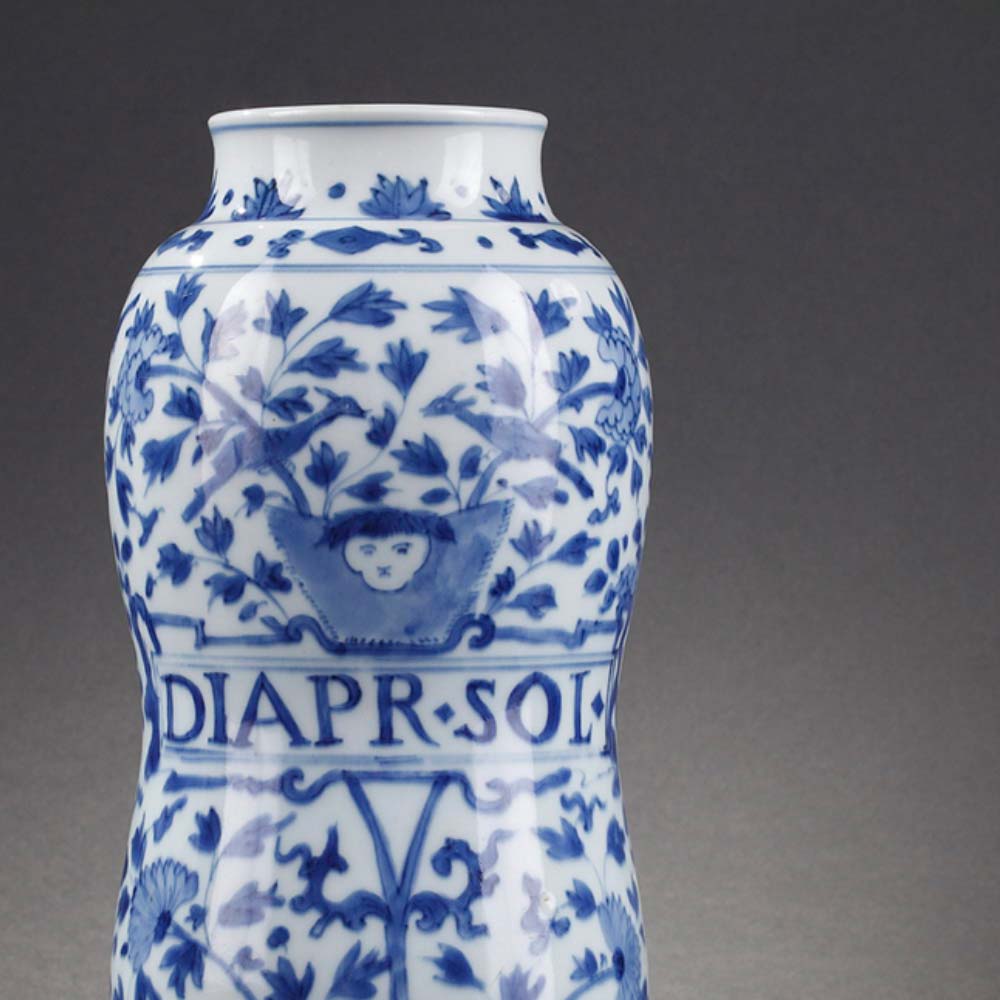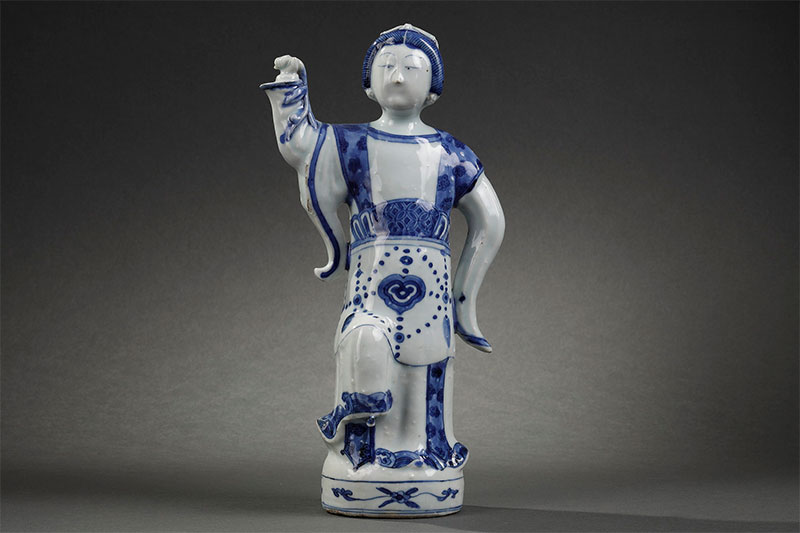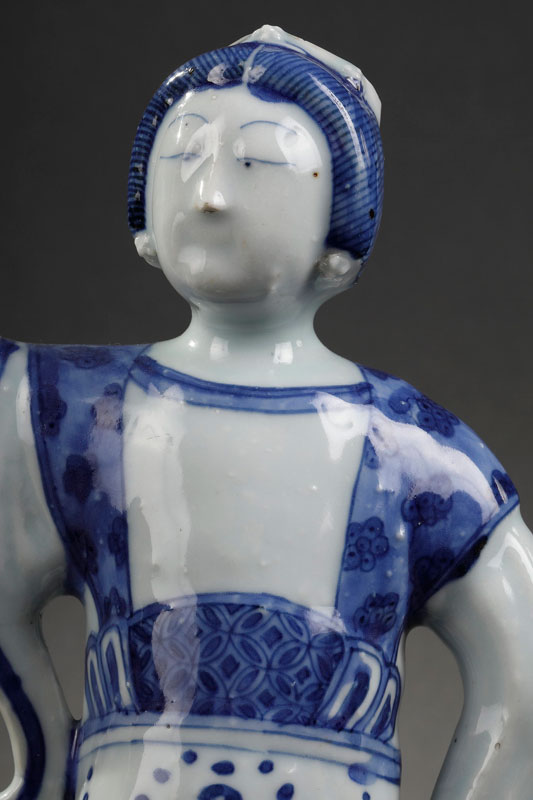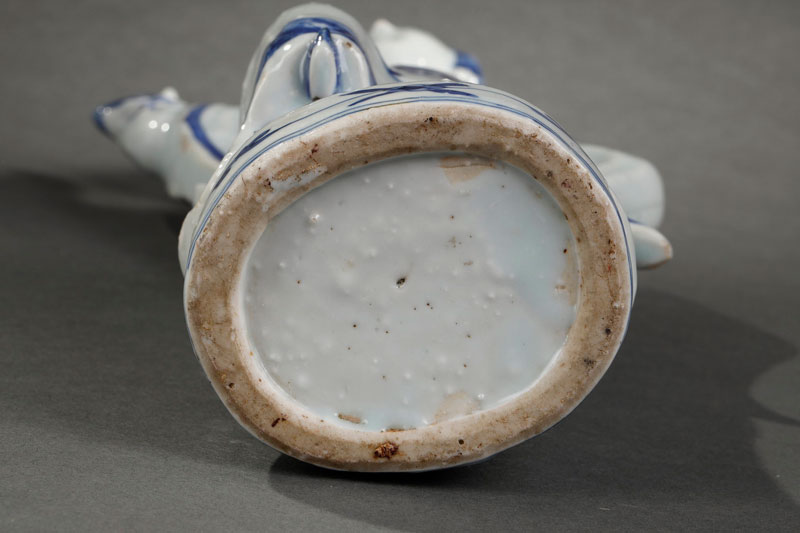A Blue and White Porcelain Ewer in a Shape of a Dancer
- Porcelain
Description
This porcelain ewer has a rare, elegant shape. It depicts a dancer in traditional dress, decorated in underglaze blue with a white glaze. The top of her head is decorated with her hair in a bun that is open for filling. Her round-necked dress is decorated with flowers on the shoulders, and the sleeves are gracefully elongated. Her left arm is lowered and her upright right hand has a small opening for pouring. Belted at the waist, the petticoat is decorated in the center with a lingzhi, a symbol of longevity, and the ruffles are decorated with moving waves. It rests on a floral pedestal.
This model was popular during the reigns of the Jiajing (1522-1566) and Wanli (1572-1620) emperors. A similar Wanli-period ewer depicting a pipa player can be seen in the British Museum, it is one of the few known blue-white models. In fact, there are several listed models similar to our dancer decorated with enamels on the cover, for example in the Jan Menze van Diepen collection, or in kinrande, i.e. with the addition of red, emerald and gold enamels on the cover (see, for example, the British Museum and the Tokyo National Museum). This type of glaze, which first appeared during the Jiajing reign, became increasingly popular in Japan and for the foreign market. In this ewer, the ceramist has chosen to keep the blue under the glaze without addings, suggesting that this jug was intended to appeal to Chinese tastes.
See HARRISON-HALL, Ming Ceramics in the British Museum, n°11-19 (a blue-in-white jug depicting a pipa player).
See British Museum PDF.704 (a dancer-shaped kinrande jug)
See Tokyo National Museum TG-918 (a dancing kinrande jug)
See “The Jan Menze van Diepen Collection” – a dancer in blue underglaze and red (same model)
A Blue and White Porcelain Ewer in a Shape of a Dancer
- Porcelain
Discover more Porcelain
Return to the collection


An ewer in the form of a carp decorated in enamels on the biscuit


A rare Ko-Imari porcelain vase


A rare “albarello” apothecary jar in underglaze blue porcelain


A pair of biscuit turquoise-glazed bitong brushpots


















